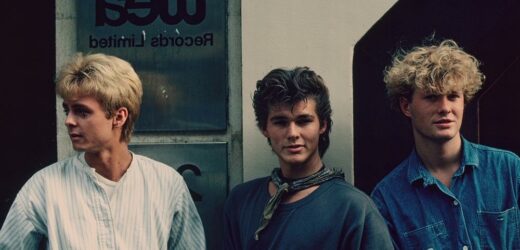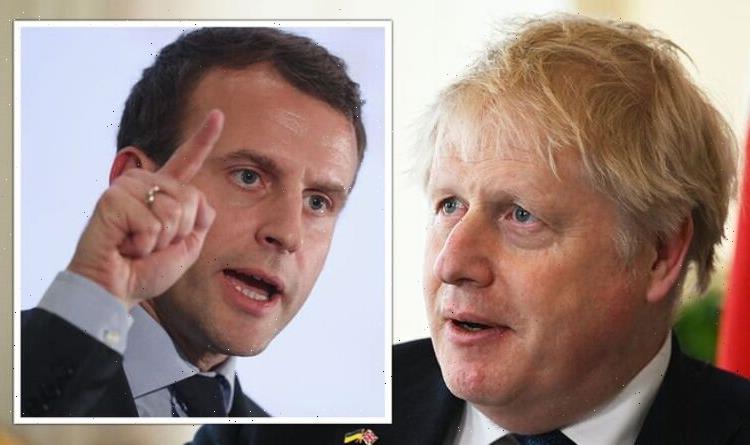You’d think the songs that we call one-hit wonders — I’ve always applied the term interchangeably to bands and songs — would, by their nature, have the quality of novelty singles. A lot of them do, like “Come On Eileen” or “I’m Too Sexy” or “Spirit in the Sky” or “867-5309 (Jenny)” or “96 Tears.” But occasionally there’s a one-hit wonder that’s so transcendent it qualifies as one of the greatest pop songs you’ve ever heard — which makes it all the more mysterious that the band in question never came within a million miles of replicating its sublimity or success. I’m thinking of songs like “Tubthumping” by Chumbawamba, “Come and Get Your Love” by Redbone, or the song that may be the greatest one-hit wonder of them all: “Take On Me” by the Norwegian synth-pop trio A-ha.
As the new documentary “A-ha: The Movie” makes clear, A-ha have been around long enough, and have enjoyed enough sustained in-concert fan exuberance, to make the one-hit-wonder classification seem a bit of a slight. (I’m sure the fans would see it that way.) In a career that stretches back 35 years, A-ha have sold 50 million records and have played to crowds of 200,000. “Take On Me” appeared on their first album, “Hunting High and Low,” released in October 1985 (though an earlier version of the song had appeared the year before), and since then they’ve released an additional 10 albums. The band members — guitarist and workaholic group engine Pål Waaktaar-Savoy, keyboardist Magne Furuholmen, and lead singer Morten Harken — have enjoyed a long-term musical marriage as close, fraught, and marked by feuds as that of the Bee Gees or the Stones, and they’ve recorded many songs with that succulent synth layer-cake vibe. A-ha came out of the moment in the ’80s that gave us the lush majesties of Pet Shop Boys and Enya and “Major Tom (Coming Home)” and “Under the Milky Way,” and they have never left that moment behind.
But let’s get real. A-ha became, and remain, famous for one and only one song (quick, hum their 1987 James Bond theme song “The Living Daylights,” or any other song they ever put out). Apart from that, they barely cracked the top 20 in the U.S. Yet that one song, in the second half of the ’80s, was inescapable, especially on MTV, where its half-animated black-and-white romantic shadow-world video, by director Steve Barron, was ubiquitous. It occupied a special place, because in the age before the revival of the romantic comedy you could argue that the “Take On Me” video was one of the great romantic movies of the 1980s, like “Ghost” compressed into four minutes.
And the song itself was so gorgeous that, somehow, you never tired of it; it was a love song that sounded like a percolating version of Christmas Day on Ecstasy. The magical beauty of “Take On Me” has something to do with the way that its rhythm is so active — the quick, loud, almost punky drums that open it, the high percussive synth riff that sounds like it could have been written by Bach, the dreamy airy jittery ear-worm propulsiveness of it all — yet the effect of the vocals, and the chords, is to counterpoint all that activity with a sensation of pure bittersweet timeless soaring.
The synth riff was actually written by Magne Furuholmen back in the ’70s, when he was 14 or 15. That was after he had met Pål (pronounced Paul), his once and future bandmate, who grew up 50 yards away from him on an apartment block of Oslo. We hear an early rock ‘n’ roll version of the riff, and it doesn’t sound particularly alluring. (They called it, derisively, “The Juicy Fruit Song,” because they thought it sounded like an ad jingle.) We hear assorted other versions, including one that’s like jaunty soft-rock reggae, and then, amazingly, there’s the original single version, released in October 1984, which somehow lacked the ecstatic verve of the one that became famous. It was a hit back in their native Norway but flopped everywhere else.
The band had been living in poverty-row flats in London, struggling to make it there since 1981, and this looked like the last gasp of their career. But they pressed on and wound up in the studio with the producer Alan Tarney, who remade the song in a single day. Tarney, interviewed in the film, was so busy with other projects that to him “it was just another record, another day in the studio.” But his production set the song free, and the revelation of it was to have Morten show off his vocal range by starting the chorus low (“Taaake…on…meee”), having it build to a higher and higher register (“Taaake…meee…on”) and finally explode into the bedazzling sunlight of falsetto (“I’ll…beee…gone…in a day or TWOOO!”). It was the most dramatic effusion of cascading Euro male vocal incandescence since the freak Dutch hit “Hocus Pocus,” and it carried the song to world domination.
As a movie with the title “A-ha: The Movie” should do, this one, directed by the Norwegian filmmaker Thomas Robsahm (with Aslaug Holm as co-director), tells you everything you need to know about the career of A-ha, even as it leaves out most of their personal lives. Their youthful exploits are rendered with the catchy help of animated sketchbook drawings done in the exact style of the “Take On Me” video, and we get to know the band members, who have a surface Scandinavian centeredness that belies many of their conflicts: Pål, the group’s taskmaster and perfectionist, soft-spoken but at times a bit of a grump; Magne, the most quietly ardent and conflicted of the group, the kind of person who can talk about not getting the songwriting credit he deserves and still sound like he’s coming to terms with his irritation about it; and Morten, who turns out to be the most interesting because of the fourth dimension he brought to it all — the fact that he was a musician who blew up into a monster teen idol.
With his cat eyes and angelic cheekbones, he resembled, in their heyday, an even more finely chiseled Patrick Swayze, and that look wound up defining much of the group’s brand. They decorated the cover of a thousand teen magazines, to the point that it created a reality Morten felt trapped inside. Now in his early 60s, he still looks magnificent and is still the draw onstage. He has always been his own muse, and is very hard on himself; even doing a soundcheck, he doesn’t phone it in.
Given that “A-ha: The Movie” is about as close as a music doc can get to being the story of one song, with a lot of power-game tidbits around the edges, it has some good stories, like one about how the group clashed with the producer-composer John Barry during the recording of “The Living Daylights,” or how they tried to bust out of the teen-pop niche by going in an almost U2 direction, a swerve that didn’t work because it lacked U2’s conviction. The bottom line is that for most of their career, they put in their hours at the studio to create album after painstaking album of superficially attractive pop that somehow lacked…the hooks. (You wish someone had put them together with Clive Davis.) We see them in rehearsal for a 2017 “MTV Unplugged” performance, and at the end of the film they do a slow version of “Take On Me” that sounds like it could have been recorded by Radiohead; it’s haunting. The song has, of course, haunted them, but there is never a moment when we hear them say that they’re sick of it. And why should they? For A-ha, “Take On Me” is more than a song — it’s their stairway to heaven, performed nightly for a world that’s more beautiful because of it.
Source: Read Full Article


